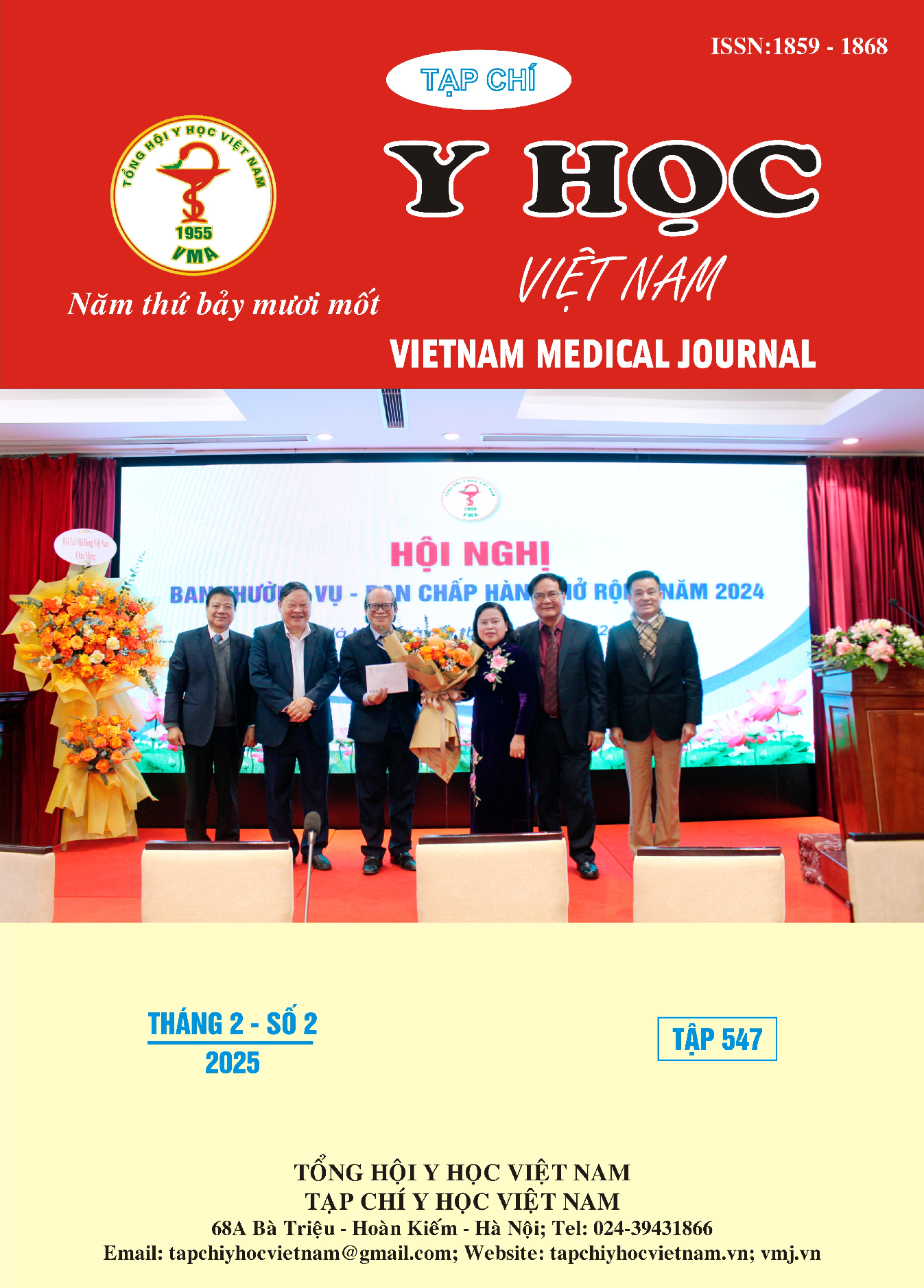CHARACTERISTICS OF MEDICATION ADHERENCE IN NEWLY DIAGNOSED TYPE 2 DIABETES PATIENTS
Main Article Content
Abstract
Introduction: Medication adherence is a crucial factor that directly impacts the treatment outcomes of chronic diseases, including type 2 diabetes. Poor medication adherence can lead to failure in blood glucose control, negatively affect the quality of life, and increase the risk of complications. Studies using the General Medication Adherence Scale (GMAS) have shown that medication adherence rates among type 2 diabetes patients range from 84% to 90%. However, assessing medication adherence in Vietnam remains a significant challenge for healthcare providers. Objective: The study aims to determine the medication adherence rate and the relationship between medication adherence and treatment outcomes in newly diagnosed type 2 diabetes patients. Methods: A cross-sectional descriptive study was conducted on 275 newly diagnosed type 2 diabetes patients at the University Medical Center, Ho Chi Minh City, using the GMAS to assess medication adherence. Results: The study found that the medication adherence rate was 93,8%. No significant correlation was found between medication adherence and blood glucose control, blood pressure, or LDL cholesterol levels in newly diagnosed type 2 diabetes patients. Conclusion: Medication adherence among newly diagnosed type 2 diabetes patients is relatively high, but improvements are still needed to reduce non-adherence rates. Additionally, various external factors may affect the accuracy of adherence assessment. Therefore, prospective studies should be conducted to monitor the progression of medication adherence over time and investigate its correlation with treatment outcomes.
Article Details
Keywords
Newly diagnosed type 2 diabetes, medication adherence, GMAS.
References
2. Biswas T, Trần Nam, Hoàng Thị Mỹ Hạnh và cộng sự. Type 2 diabetes and hypertension in Vietnam: a systematic review and meta – analysis of studies between 2000 and 2020. BMJ Open. 2022;12(8):e052725. doi:10.1136/bmjopen-2021-052725.
3. Bộ Y tế. Hướng dẫn chẩn đoán và điều trị đái tháo đường típ 2 (Ban hành kèm theo Quyết định số 5481/QĐ-BYT ngày 30 tháng 12 năm 2020).
4. American Diabetes Association Professional Practice Committee. 9. Pharmacologic Approaches to Glycemic Treatment: Standards of Medical Care in Diabetes 2022. Diabetes Care. 2021;45(Supplement_1):S125-S143. doi:10.2337/dc22-S009.5. Polonsky WH, Henry RR. Poor medication adherence in type 2 diabetes: recognizing the scope of the problem and its key contributors. Patient preference and adherence. 2016;10: 1299-307. doi:10.2147/ppa. S106821.
6. Naqvi AA, Hassali MA, Rizvi M, et al. Development and Validation of a Novel General Medication Adherence Scale (GMAS) for Chronic Illness Patients in Pakistan. Frontiers in pharmacology. 2018;9: 1124. doi:10.3389/fphar. 2018.01124.
7. Nguyễn Hương Thảo, Truơng Văn Hòa, Mai Tuyết Vi và cộng sự. Vietnamese Version of the General Medication Adherence Scale (GMAS): Translation, Adaptation, and Validation. Healthcare (Basel). Oct 29 2021;9(11)doi: 10.3390/healthcare9111471.
8. Ong Tú Mỹ, Nguyễn Kiên Cường, Phạm Thành Suôi. Nghiên cứu tình hình và sự tuân thủ trong sử dụng thuốc điều trị bệnh nhân đái tháo đường týp 2 điều trị ngoại trú tại khoa khám bệnh Bệnh viện Đa khoa Bạc Liêu năm 2021 – 2022. Tạp chí Y học Việt Nam. 08/26 2022;517(2) doi:10.51298/vmj.v517i2.3239.
9. Van Minh H, Van Huy T, Long DPP. Highlights of the 2022 Vietnamese Society of Hypertension guidelines for the diagnosis and treatment of arterial hypertension: The collaboration of the Vietnamese Society of Hypertension (VSH) task force with the contribution of the Vietnam National Heart Association (VNHA): The collaboration of the Vietnamese Society of Hypertension (VSH) task force with the contribution of the Vietnam National Heart Association (VNHA). J Clin Hypertens (Greenwich). 2022 Sep;24(9):1121-1138. doi: 10.1111/jch.14580.
10. World Health Organization. Adherence to long – term therapies: evidence for action. World Health Organization; 2003.


